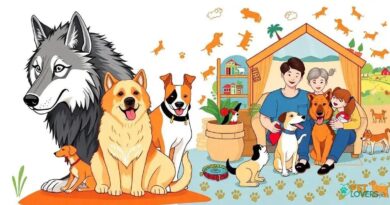What is Traditional breeds
What are Traditional Breeds?
Traditional breeds refer to dog breeds that have been developed over many generations, often for specific purposes such as herding, hunting, or companionship. These breeds are typically recognized for their unique characteristics, temperaments, and physical traits that have been preserved through selective breeding practices. Understanding what traditional breeds are involves exploring their historical significance and the roles they have played in human society.
The Historical Context of Traditional Breeds
Throughout history, dogs have been bred for various functions, leading to the emergence of traditional breeds that reflect the needs and lifestyles of different cultures. For instance, herding breeds like the Border Collie were developed to assist shepherds in managing livestock, while hunting breeds such as the Beagle were bred for their keen sense of smell and tracking abilities. This historical context is crucial in understanding the development and preservation of traditional breeds.
Characteristics of Traditional Breeds
Traditional breeds often exhibit distinct physical and behavioral traits that set them apart from more modern or mixed breeds. These characteristics can include size, coat type, color patterns, and temperament. For example, the German Shepherd is known for its intelligence and versatility, making it a popular choice for police and service work. Such traits are a result of generations of selective breeding aimed at enhancing specific abilities and behaviors.
The Importance of Preservation
Preserving traditional breeds is essential for maintaining genetic diversity within the canine population. As modern breeding practices often favor certain traits over others, traditional breeds can become endangered. Organizations and breed clubs work tirelessly to promote responsible breeding practices and educate the public about the importance of these breeds. This preservation effort ensures that future generations can appreciate the unique qualities of traditional breeds.
Traditional Breeds vs. Modern Breeds
While traditional breeds have deep historical roots, modern breeds often emerge from a desire to create dogs with specific aesthetic qualities or traits. This difference can lead to a divergence in health and temperament, as some modern breeds may prioritize appearance over functionality. Understanding the differences between traditional and modern breeds can help potential dog owners make informed decisions about which breed aligns with their lifestyle and needs.
Popular Traditional Breeds
Some of the most recognized traditional breeds include the Labrador Retriever, the Golden Retriever, and the Bulldog. Each of these breeds has a rich history and has been bred for specific roles, from hunting companions to family pets. Their popularity can be attributed to their friendly dispositions, trainability, and adaptability to various living situations, making them excellent choices for many households.
Health Considerations for Traditional Breeds
Like all dog breeds, traditional breeds can be prone to certain health issues. Understanding these potential health concerns is vital for prospective owners. For instance, some traditional breeds may be susceptible to hip dysplasia or heart conditions. Regular veterinary check-ups, a balanced diet, and proper exercise can help mitigate these risks and ensure a long, healthy life for these beloved companions.
Training and Socialization
Training and socialization are crucial for traditional breeds to thrive in a family environment. Many traditional breeds possess strong instincts that require proper guidance and training from an early age. Engaging in obedience training, socialization with other dogs, and exposure to various environments can help these dogs develop into well-rounded pets. Owners should be prepared to invest time and effort into training to foster a positive relationship with their traditional breed.
The Role of Traditional Breeds in Modern Society
In today’s world, traditional breeds continue to play significant roles in various capacities, from working dogs in law enforcement to beloved family pets. Their historical significance and unique traits contribute to their ongoing popularity. As society evolves, the appreciation for traditional breeds remains strong, highlighting the importance of understanding and valuing these remarkable dogs.




